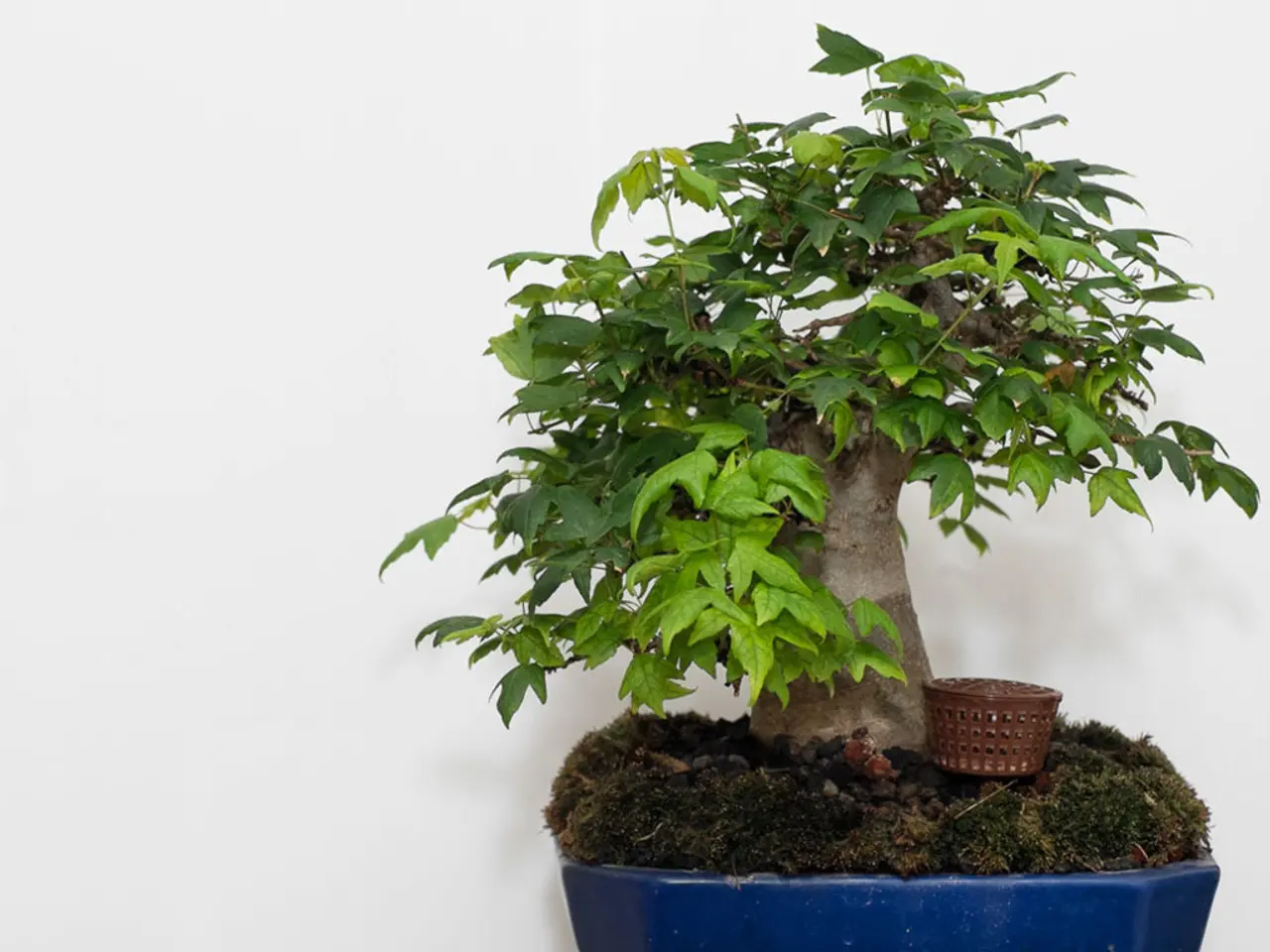Bonsai Root Exposure Crisis Management and Root Protection Strategies
Caring for Bonsai Roots: A Comprehensive Guide
When it comes to nurturing a thriving bonsai tree, the health of its roots is paramount. Factors such as drainage and aeration, depth and width, material and texture, and the tree's specific needs and characteristics should all be considered when selecting a pot.
The delicate balance of bonsai root health is influenced by environmental conditions, tree species, and human intervention. Neglecting these aspects can lead to issues such as root constriction, poor drainage, and inadequate nutrient supply. Growing a bonsai tree directly in a rock or gravel base is not recommended due to these potential problems.
To achieve perfect soil moisture balance, consider the tree species, soil composition, watering frequency, and environmental conditions when selecting a potting mix. Regular monitoring of the root system's response to watering, foliage health, and seasonal growth patterns can help detect potential issues before they escalate into major problems.
Effective methods to address root exposure in bonsai trees and promote long-term root health focus on careful root management, protection, and encouraging healthy growth.
Key approaches include:
- Root Pruning and Repotting Timing: Root pruning should ideally be done just before the growing season begins, when leaf buds start to swell, to minimize stress and promote recovery. This timing helps roots heal and new growth to establish more effectively.
- Use of Moss and Soil Cover: Covering exposed roots with sphagnum moss or a suitable bonsai soil mix can help retain moisture and protect roots from drying out. Moss not only aids moisture retention but can also encourage root growth by maintaining a humid microenvironment.
- Encouraging Callous Formation on Damaged Root Areas: For roots that are wounded or exposed due to damage, techniques such as cleaning dead tissue, carving back to healthy tissue, and sometimes charring dead areas with a blowtorch to resist decay can promote callous formation and protection against disease.
- Air Layering and Root Stimulation: Air layering techniques stimulate new root growth on branches and can be adapted for root development purposes. This encourages additional feeder roots which improve long-term health.
- Mass Bending and Styling for Exposed Roots: For aesthetic and health purposes, shaping and positioning exposed roots through careful bending and wiring helps balance root exposure with overall tree stability and growth.
- General Care: Providing consistent watering, proper fertilization, and preventing extreme dryness are crucial for root health. Avoid heavy pruning or repotting stress outside ideal seasons.
When repotting a bonsai tree, a gentle and methodical approach is essential to minimize stress and trauma to the roots. Handle the roots by the trunk, rather than grasping them directly, to reduce the risk of root breakage and damage. Use a pot that is deep enough to accommodate the tree's root system, wide enough to provide stability, made from a breathable material, and with built-in drainage holes.
Water thoroughly after repotting to settle the soil, reducing stress and promoting healthy root establishment. Use a shallow pot to reduce soil volume and prevent washing away, helping maintain soil moisture and prevent erosion. Gently tease out roots to prevent tangling and knotting, promoting healthy root growth and development.
Identifying root bound in a bonsai tree is vital for its health; common signs include slowed growth, yellowing leaves, and a dense, circling root system upon inspection. Proper repotting techniques play a vital role in minimizing root damage, as rough handling or careless excavation can cause irreparable harm to the delicate roots.
In summary, managing root exposure involves protecting roots from drying with moss or soil coverage, timing root pruning properly to encourage healing, stimulating root growth through air layering or careful root work, and ensuring overall bonsai care routines support healthy roots. By following these guidelines, you can help your bonsai tree thrive for years to come.
To maintain a strong bonsai tree, it's important to consider the importance of home-and-garden elements when selecting a pot. A pot with proper drainage, aeration, and width and depth suitable for the tree's root system will contribute to its overall health.
Gardening techniques such as root pruning, repotting, and air layering can help manage root exposure and promote healthy root growth, resulting in a thriving bonsai lifestyle.






